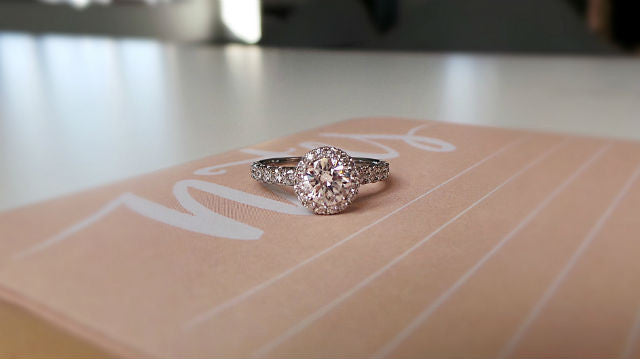The Warrenders guide to diamonds

Finding the perfect diamond can be a little daunting as they come in a wide variety of colours and sizes. Choosing the right diamond for you requires knowledge about cut, clarity, carat and colour. Read on for our basic guide on these four big Cs which need to be considered when choosing your dream stone…
Cut
The cut of a diamond refers to how the proportions and finish of a diamond affect its overall appearance. The facets allow light to reflect from one to another determining the brilliance of the stone. The most popular cut - the round brilliant - can have 57 or 58 facets. Other cuts include emerald, pear, marquise, princess, radiant, oval and heart. The cut is graded on a scale from excellent to poor and incorporates the diamond’s brightness, fire, scintillation, weight ratio, durability, polish and symmetry.
Colour
The more colourless a diamond is, the rarer and more valuable the stone. The colour of diamonds can vary greatly, ranging from totally colourless through to a yellow, grey or brown hue. The coloured tinting found in most diamonds is caused by minute impurities within the stone. Each stone is colour graded to a precise scale from ‘D’ (colourless) to ‘Z’ (saturated).
Diamonds can also occur in other colours, including pink, blue, red, green and brown. These diamonds are graded by their intensity and colour, which ranges from ‘pale’ to ‘fancy vivid intense’.
Fluorescence refers to the emission of visible light from a diamond when subjected to ultraviolet radiation. The terms for describing the strength of fluorescence are: None, Faint, Medium, Strong and Very Strong.
Clarity
A diamond’s clarity is determined by the degree to which it is free from naturally occurring inclusions under ten times magnification. The number, type, colour, size and position of these inclusions can affect a diamond’s value. Virtually all diamonds have imperfections called inclusions and blemishes. The fewer inclusions, the rarer the stone. The diamond clarity ratings range from FL (flawless) to I3 (heavily included).
Carat
One carat equals 0.20 grams and is divided into 100 points. A diamond weighing 50 points is half a carat. Diamonds of equal size can have very different values, depending on their cut, clarity and colour. However, when considering larger stones, they will have considerably more value. Usually a two-carat diamond will be more than twice as valuable as a one carat stone with the same grading. Large diamonds of high quality are very rare.
At Warrenders we are experts in precious gemstones meaning we are able to handle certificated diamonds and have all the knowledge required to assist you in choosing your dream stone. We only use GIA (Gemmological Institute of America) certificated diamonds – the leading and internationally recognised grading system for classifying diamonds.
